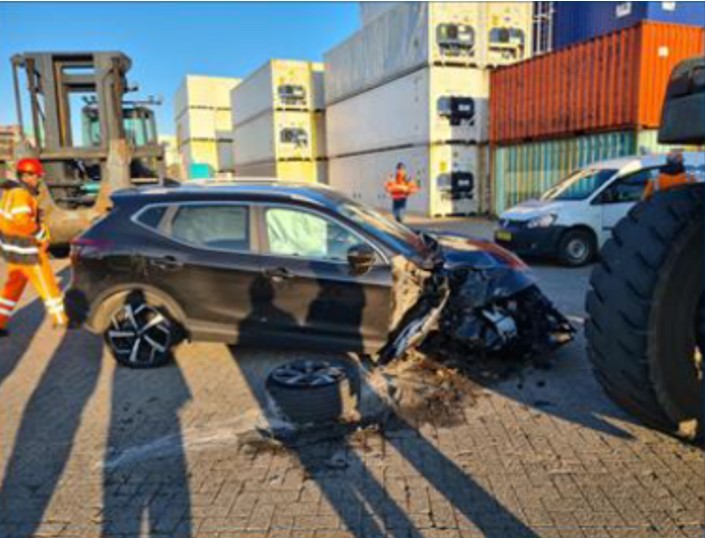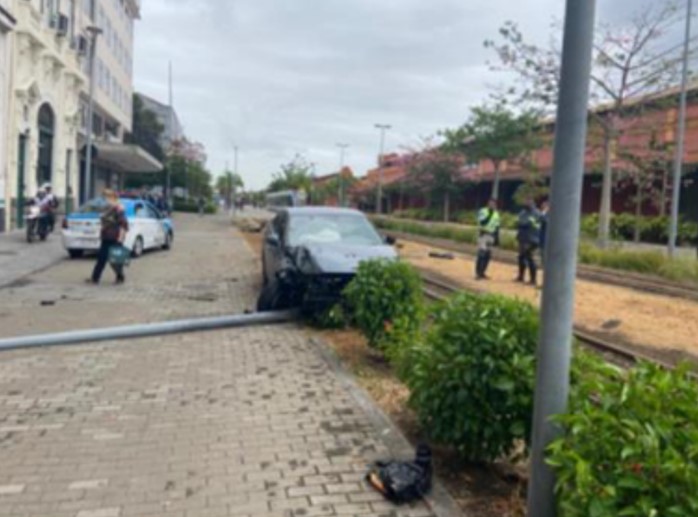A focus on journey management
A member reports two serious vehicle incidents, in Brazil and in the Netherlands, which resulted in only minor injuries but could have had much worse outcomes.
What happened?
Incident 1: In the Netherlands, a contractor was driving on a third-party site when the his car collided with a 30Te forklift truck. The site had poor road markings and the visibility at the junction where the accident occurred was poor, due to stacked steel coils. Neither driver had stopped at the junction to check whether the route was clear. The car sustained significant damage, but the driver and the forklift driver did not suffer any injuries.
Incident 2: In Brazil, two employees were being driven by a third-party transport driver. Due to a medical issue, the driver lost the ability to control the car and it continued, at speed, for 400m across a tram line and a pedestrian walkway, before striking a lamp post. The driver and both passengers sustained minor injuries.


What went wrong
Incident 1:
- Visibility was restricted at the junction but neither vehicle stopped to check the way before proceeding;
- The known hazards on site associated with movements of heavy machinery had not been communicated to the team on site, nor had relevant actions from risk assessments been closed out.
Incident 2:
- The third-party driver was not fit to drive. However, there was no process in place within the third-party transport provider to manage fitness for work checks or training validity of drivers;
- The company had no oversight of the drivers being provided by the third party, and so a list of approved drivers had fallen out of date;
- There were unclear lines of responsibility for the ongoing management of the third-party transport provider.
Recommendations
- Be willing to intervene and stop unsafe behaviours during journeys;
- Ensure everyone who is driving on work business is aware of their personal responsibilities and have defensive driving techniques in mind when they step into the vehicle;
- Use Journey Management techniques. Like any task we undertake, proper planning for Journey Management should be undertaken, especially when traveling on journeys that are not familiar – remember the 7 T’s “Take The Time To Think Things Through”;
- When mobilizing personnel to third-party sites, known hazards such as moving machinery, ongoing hazardous work, pedestrian safety, and security should be clearly communicated by the site during the induction and/or prior to travel;
- Third party vehicles (hire cars, taxis, private transport providers) should have basic safety features as standard for example air bags, ABS brakes, 3-point seatbelts and crash protection;
- When contracting third-party transportation services, the contract language should be clear on licensing, training, and fitness to drive;
- Oversight should be in place for approving drivers and monitoring of Journey Management Plans as determined by local regulatory requirements.
Members may wish to refer to:
Safety Event
Published: 20 July 2022
Download: IMCA SF 18/22
IMCA Safety Flashes
Submit a Report
IMCA Safety Flashes summarise key safety matters and incidents, allowing lessons to be more easily learnt for the benefit of all. The effectiveness of the IMCA Safety Flash system depends on Members sharing information and so avoiding repeat incidents. Please consider adding [email protected] to your internal distribution list for safety alerts or manually submitting information on incidents you consider may be relevant. All information is anonymised or sanitised, as appropriate.
IMCA’s store terms and conditions (https://www.imca-int.com/legal-notices/terms/) apply to all downloads from IMCA’s website, including this document.
IMCA makes every effort to ensure the accuracy and reliability of the data contained in the documents it publishes, but IMCA shall not be liable for any guidance and/or recommendation and/or statement herein contained. The information contained in this document does not fulfil or replace any individual’s or Member's legal, regulatory or other duties or obligations in respect of their operations. Individuals and Members remain solely responsible for the safe, lawful and proper conduct of their operations.
